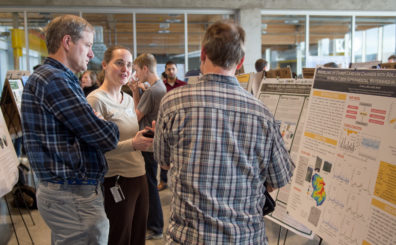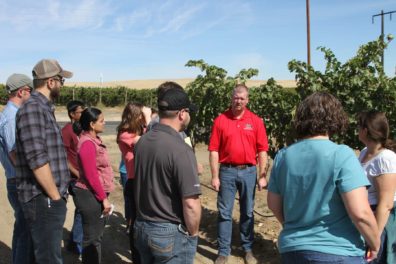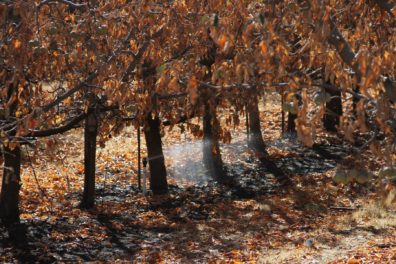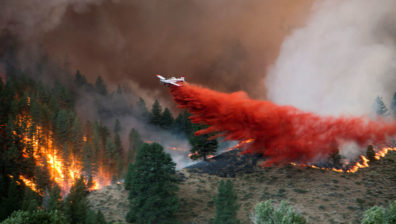BioEarth: The Biosphere-relevant Earth system model
With a focus on the water-food nexus, the Biosphere-relevant Earth system Model (BioEarth; Adam et al., 2014) is an open-source, regional-scale, CRB-focused Earth system modeling project incorporating biogeochemistry, dynamic vegetation in managed and unmanaged landscapes, and atmospheric, aquatic, and economic processes. BioEarth uses a “bottom up” approach to better understand the implications of agriculture and natural resource management strategies on Earth system dynamics at finer spatial scales than are currently possible with most regional-scale models. BioEarth’s tightly coupled hydrology, water regulation, and cropping systems models will be leveraged for this project.
Group Members Involved in BioEarth: Jennifer Adam, Ryan Hull, Mingliang Liu, Keyvan Malek, Kirti Rajagopalan, and Julian Reyes
BioEarth Overview Paper (Adam et al. 2014)
Highlights from the BioEarth Project
 Jennifer Adam discusses hydrology with Jan Boll (WSU) and Erin Brooks (UI) at the 2016 BioEarth All Hands Meeting Poster Session.
Jennifer Adam discusses hydrology with Jan Boll (WSU) and Erin Brooks (UI) at the 2016 BioEarth All Hands Meeting Poster Session.
Columbia River Basin Water Supply and Demand Forecast
The Office of Columbia River (OCR) continues to aggressively pursue development of conservation and water supply projects to meet eastern Washington’s economic and environmental needs. To support this mission, every five years OCR prepares and submits to the Washington State Legislature a long-term water supply and demand forecast (Forecast). The Forecast provides a generalized, system-wide assessment of how future environmental and economic conditions are likely to change water supply and demand by 2030. Understanding where additional water supply is most critically needed will assist OCR in making smarter investments that help improve water supply for eastern Washington’s instream and out-of-stream users. The Forecast project is an application of BioEarth modeling tools.
Group Members involved in the Forecast Project: Jennifer Adam, Muhammad Barik, Rushi Begum, Mingliang Liu, Keyvan Malek, Kirti Rajagopalan, and Sasha Richey.
 Scott Revell (Roza Irrigation District) gives a tour of the district to members of the project during the 2015 drought.
Scott Revell (Roza Irrigation District) gives a tour of the district to members of the project during the 2015 drought.
ColumbiaFEW – Food Energy Water Nexus
Resilient natural resource management hinges on understanding the complex and interdependent relationships between food, energy and water (FEW). In the Columbia River Basin (CRB), these issues revolve around the competition for limited surface water resources to sustain irrigated agriculture, hydropower generation, and in-stream flow requirements for endangered fish populations. This project (ColumbiaFEW) seeks to develop a framework for achieving maximum co-benefits between FEW sectors to foster CRB resilience. Using conceptual and bio-physical regional models, this project will evaluate FEW innovations in technology and institutions across multiple spatio-temporal scales and develop storage management strategies that incorporate stakeholder feedback to identify, legitimize and remove barriers to innovative solutions.
Group Members involved in the ColumbiaFEW Project: Jennifer Adam, Mingliang Liu, Sasha Richey, Keyvan Malek, Kirti Rajagopalan, and Matt Yourek.
 Dead Yakima Valley apple trees being irrigated during the 2015 drought.
Dead Yakima Valley apple trees being irrigated during the 2015 drought.
FireEarth
Fire management in the Western U.S. is facing unprecedented challenges in response to climate change, growing populations, and the expanding wildland-urban interface. Although fires are an intrinsic component of many ecosystems, a combination of biophysical and socioeconomic factors can turn them into social or natural disasters, with compounding negative impacts on both ecosystems and human communities. To address these new challenges, we must account for ecological, social, economic, and political dynamics over multiple spatial and temporal scales. Simulation modeling is a critical tool for exploring these complex feedbacks given the uncertainties associated with changing climate and growing populations. We are developing a modeling framework, FireEarth, which expands the Biosphere-relevant Earth system model (BioEarth) to incorporate fire, insect outbreaks, drought, and erosion. This framework will be used to simulate episodic disturbance events and their impacts on hydrologic and biogeochemical cycles. BioEarth incorporates the ecohydrologic model RHESSys to simulate biophysical processes in watersheds.
Group Members involved in FireEarth: Jennifer Adam, Erin Hanan, Mingliang Liu, Ning Ren, Becca Gustine, and Jonathan Gendron.
